17PCBPP23 PHARMACY PRACTICE III
Course Objectives:
Upon completion of the course, the student will be able to
- Understand the professional roles of pharmacists in community, hospital and clinical pharmacy areas.
- Understand the professional responsibilities of the pharmacists.
- Provide the intended services.
Detailed syllabus and Lecture wise program
1)Drugs and Poison Information 06 hrs
- Introduction to drug information resources available
- Systematic approach in answering DI queries
- Critical evaluation of drug information and literature
- Preparation of written and verbal reports
- Establishing a Drug Information Centre
- Poisons information- organization & information resources
- Drug Information Bulletin
2) Pharmacovigilance 05 hrs
- Scope, definition and aims of Pharmacovigilance
- Adverse drug reactions – Classification, mechanism, predisposing factors, causality assessment [different scales used]
- Reporting, evaluation, monitoring, preventing & management of ADRs
- Role of pharmacist in management of ADR.
3)Medication Errors – classification, consequences, prevention, and role of Pharmacist.Dispensing errors, and ways to minimize them. 03 hrs
4)Medication adherence – Consequences on non-adherence, role of pharmacist methods to improve adherence, compliance aids 03 hrs
5)Communication skills – verbal, written, Body language 03 hrs
6)OTC medications – definition, need, and role of Pharmacist. OTC medications in India, counseling for OTC products. Self medication and role of pharmacist in promoting safe self-medication. 02 hrs
7)Responding to symptoms/minor ailments 10 hrs Relevant pathophysiology, common non-pharmacological and OTC drug therapy, and referral to doctor – in :Pain, GI disturbances (Nausea, Vomiting, Dyspepsia, diarrhea, constipation), Worm infestations, Pyrexia, Ophthalmic symptoms, URT infections, skin disorders, oral and dental disorders.
8) Hospital supplies 7 hrs
- Surgical items/supplies – catheters, syringes & needles, I.v. sets, Ryle’s tubes, Study of Woundmanagement, stoma and incontinence products, Surgical dressing like cotton, gauze, bandages and adhesive tapes,
- sutures, ligatures,
- patient care equipment – nebulizers, thermometers, .
9) Veterinary Pharmacy – introduction and Role of pharmacist in procurement and distribution of veterinary medicines 4 hrs
COURSE OUTCOME:
At the end of the course, the student will be able to
CO1 Describe the professional roles of pharmacists in community areas.
CO2 Explain the professional responsibilities of the pharmacists.
CO3 Discuss the intended services.
CO4 Describe the professional roles of pharmacists in hospital areas
CO5 Describe the professional roles of pharmacists in clinical pharmacy areas.
REFERENCES:
Practice Standardsand Definitions – The Society of Hospital Pharmacists of Australia.
Basic skills in interpreting laboratory data – Scott LT, American Society of Health System PharmacistsInc.
Biopharmaceutics and Applied Pharmacokinetics – Leon Shargel, Prentice Hall publication.
A text book of Clinical Pharmacy Practice; Essential concepts and skills, Dr.G.Parthasarathi etal, Orient Orient Langram Pvt.Ltd.ISSBN8125026
Hospital pharmacy by William .E. Hassan
 CHAT WITH A STUDENT
CHAT WITH A STUDENT